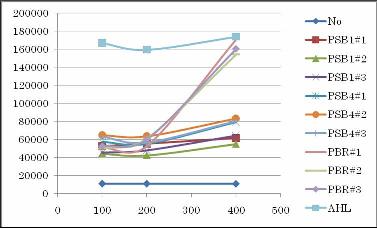Tokyo/Works/Assay2
From 2007.igem.org
(Difference between revisions)
(→) |
(→Result & Conclusion) |
||
| Line 14: | Line 14: | ||
====Result & Conclusion==== | ====Result & Conclusion==== | ||
| - | + | Not only high copy number plasmid pSB1, also low copy number plasmid pSB4 and pBR produced enough AHL to activate the LacI hybrid promoter in other cells. Especially, pBR remarkably produced AHL in the present experiment. | |
<br> | <br> | ||
[[Image:AHL_assay_endogenous_Results.jpg|300px]] | [[Image:AHL_assay_endogenous_Results.jpg|300px]] | ||
<br> | <br> | ||
| - | |||
====⇒see more [[Tokyo/Activation check by cell-produced AHL|details]]==== | ====⇒see more [[Tokyo/Activation check by cell-produced AHL|details]]==== | ||
Revision as of 08:25, 24 October 2007
Works top 0.Hybrid promoter 1.Formulation 2.Assay1 3.Simulation 4.Assay2 5.Future works
Parameters for the equations in Formulation <←link> have been experimentally determined in Assay1 <←link>. Analysing the result, the following experiments were turned out to be necessary.
Activation check by cell-produced AHL
Purpose
To check if worker E. coli (Sender) can produce enough AHL for our model to work by using different copy numbers of plasmids.
Result & Conclusion
Not only high copy number plasmid pSB1, also low copy number plasmid pSB4 and pBR produced enough AHL to activate the LacI hybrid promoter in other cells. Especially, pBR remarkably produced AHL in the present experiment.
